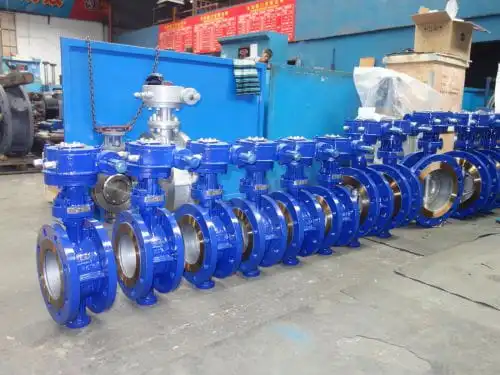Can it bear the pressure?
In short, a butterfly valve is one of the most economical valves available, but it might not be able to handle some of the process conditions, like a high-velocity fluid. In this situation, it might be more appropriate to use a globe valve.
In the case of a differential pressure of less than 3 bar (inlet pressure minus outlet pressure), a butterfly valve is generally the best solution for each flow. However, for situations with higher differential pressure, please consult valve experts as these should be reviewed on a case by case basis.
When thinking about the valve shut off pressure, generally, a butterfly valve has a shut-off pressure of less than 10 bar. If the shut-off pressure is higher than that, then the use of a butterfly valve needs to be carefully considered – in this circumstance, a globe valve can bear a high differential pressure whereas a butterfly valve may run the risk of becoming inoperable and additionally, the valve’s seat may be impaired and leak.
Lining is important
The simple structure of a butterfly valve means that the valve can be lined or coated relatively easily. A large part of the butterfly valve market is occupied by vulcanized rubber valves, which typically prevent corrosion from the process fluid. The use of rubber lining should be limited to 10 bar.
Butterfly valves are often specified for high temperatures, their simple design means that they can be applied to high-temperature applications of around 1200°C, in this case, the valves are lined with refractory materials.
Low-emission applications
The rotary motion of the butterfly valve is particularly suited to low emission applications where the turning motion of the valve shaft generates less distortion and damage to the packing rings, therefore, the packing typically has a longer life than equivalent rising stem valves.
Seat leakage
The requirement of preventing seat leakage is key to selecting the right butterfly valve. They are produced in various forms, from concentric, double offset form (high performance) to triple offset form.
Concentric designs are applied regardless of seat leakage. In these designs, the body and disc have a clearance flow. Double offset designs are typically applied for control applications. Triple offset designs are mostly used for isolation applications where tight shut-off is important. The movement of the disc on a triple offset design means that the seal ring has little or no contact with the valve body and therefore the turning of the disc does not generate any damage to the seal.
You can save on construction costs
There are no fixed rules for the weight and space requirements of the valve; however, the weight of a butterfly valve is normally at least half of the weight of the same-size globe valve. This offers advantages in saving costs in the procurement and construction phases when considering structures, structural support and handling.
Understand the maintenance strategy
One of the main considerations with most butterfly valve designs is that the valves need to be removed from the piping for any internal repairs - so it is important to understand the on-spot maintenance strategy before installing valves.

